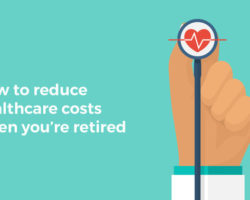The Home Affordable Refinance Program, or HARP, is one of the most successful refinance programs currently available to homeowners in the United States. The Federal Housing Finance Agency launched it in 2009. Its sole purpose is to help homeowners who ended up underwater or near underwater on their mortgages after the last housing crash.
Beginnings
After the U.S. housing bubble burst in 2008, millions of borrowers found themselves in a difficult predicament. The values of their homes dropped at a very fast pace, falling below the balance of their mortgages. As banks require a loan-to-value ratio of 80% or less to qualify for refinancing without private mortgage insurance, these same homeowners were unable to take advantage of the low interest rates.
The Federal Housing Finance Agency launched HARP the following year. It offered a lifeline to homeowners whose loan-to-value ratio exceeded 80%, allowing them to refinance without paying for mortgage insurance. At first, the program was available only to those with a loan-to-value ratio of 105%. But this rule soon changed. HARP was expanded to include those with a loan-to-value ratio of up to 125%.
Expansion and booming success
The initial HARP program was a moderate success. However, due to some restrictions, it was unable to reach its full potential. This had to change. And it did, in December 2011, when HARP 2.0 came online. The updated program had no limit on negative equity for mortgages up to 30 years, it accepted homeowners with PMI on their loan, allowed refinancing for all occupancy types, and it also enabled homeowners to go to any lender to refinance.
President Obama talked about HARP in 2011, during his “We Can’t Wait” speech.
“There are still millions of Americans who have worked hard and acted responsibly, paying their mortgage payments on time. But now that their homes are worth less than they owe on their mortgage, they can’t get refinancing,” he said. “If you meet certain requirements, you will have the chance to refinance at lower rates, which could save you hundreds of dollars a month, and thousands of dollars a year in mortgage payments,” the president explained, adding that “these steps aren’t a substitute for the bold action we need to create jobs and grow the economy, but they’ll make a difference.”
The changes brought on immediate success. Prior to 2012, HARP activity was about 33,000 loans per month. Since January 2012, it jumped to an impressive 91,000 loans per month. According to a recently released report from the Federal Housing Finance Agency, HARP has so far helped more than 3,400,543 homeowners. In fact, the FHFA announced that there are currently only about 325,000 borrowers eligible for the program, but who have not used it yet.
What to do to qualify for HARP
In order to qualify for HARP, a borrower must meet certain criteria required by the government.
- The mortgage must be owned or guaranteed by Freddie Mac or Fannie Mae.
- The mortgage must have been acquired by Freddie Mac or Fannie Mae on or before May 31, 2009.
- The homeowner must not have a previous HARP refinance of the mortgage. A Fannie Mae loan that was refinanced under HARP during March-May 2009 is accepted.
- The homeowner must be current on their mortgage payments, with no late payments in the last six months and no more than one late payment in the last twelve months.
- The current loan-to-value ratio of the property must be greater than 80%.
- The homeowner must benefit from the loan by either lower monthly payments or movement to a more stable product.
The Home Affordable Refinance Program has so far been a huge success. Unfortunately, it is now fast approaching its end. The program will end on December 31, 2016. It’s unlikely that it will be extended again.










